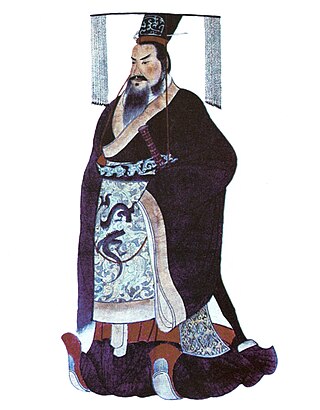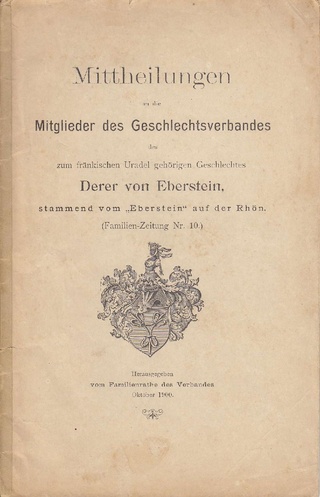Related Research Articles

Feudalism, also known as the feudal system, was a combination of legal, economic, military, cultural, and political customs that flourished in medieval Europe from the 9th to 15th centuries. Broadly defined, it was a way of structuring society around relationships derived from the holding of land in exchange for service or labour.

Weregild, also known as man price, was a precept in some historical legal codes whereby a monetary value was established for a person's life, to be paid as a fine or as compensatory damages to the person's family if that person was killed or injured by another.

The nobility of China represented the upper strata of aristocracy in premodern China, acting as the ruling class until c. 1000 CE, and remaining a significant feature of the traditional social structure until the end of the imperial period.

The term magnate, from the late Latin magnas, a great man, itself from Latin magnus, "great", means a man from the higher nobility, a man who belongs to the high office-holders or a man in a high social position, by birth, wealth or other qualities in Western Christian countries since the medieval period. It also includes the members of the higher clergy, such as bishops, archbishops and cardinals. In reference to the medieval, the term is often used to distinguish higher territorial landowners and warlords, such as counts, earls, dukes, and territorial-princes from the baronage, and in Poland for the richest szlachta.
Traditional rank amongst European royalty, peers, and nobility is rooted in Late Antiquity and the Middle Ages. Although they vary over time and among geographic regions, the following is a reasonably comprehensive list that provides information on both general ranks and specific differences. Distinction should be made between reigning families and the nobility – the latter being a social class subject to and created by the former.
The Armenian nobility was a class of persons which enjoyed certain privileges relative to other members of society under the laws and customs of various regimes of Armenia. Governments which recognized or conferred nobility were the Kingdom of Van, Satrapy of Armenia, Kingdom of Armenia, Bagratid Kingdom of Armenia (885–1045) and the Armenian Kingdom of Cilicia (1198–1375). The Armenian kingdoms of Vanand (963–1065), Syunik (987–1170), and Lori (978–1113) had a system of nobility that was similar to the nobility of Cilicia.
The aristocracy of Norway is the modern and medieval aristocracy in Norway. Additionally, there have been economical, political, and military elites that—relating to the main lines of Norway's history—are generally accepted as nominal predecessors of the aforementioned. Since the 16th century, modern aristocracy is known as nobility.

The nobility of Italy comprised individuals and their families of the Italian Peninsula, and the islands linked with it, recognized by the sovereigns of the Italian city-states since the Middle Ages, and by the kings of Italy after the unification of the region into a single state, the Kingdom of Italy.
The German nobility and royalty were status groups of the medieval society in Central Europe, which enjoyed certain privileges relative to other people under the laws and customs in the German-speaking area, until the beginning of the 20th century. Historically, German entities that recognized or conferred nobility included the Holy Roman Empire (962–1806), the German Confederation (1814–1866) and the German Empire (1871–1918). Chancellor Otto von Bismarck in the German Empire had a policy of expanding his political base by ennobling nouveau riche industrialists and businessmen who had no noble ancestors. The nobility flourished during the dramatic industrialization and urbanization of Germany after 1850. Landowners modernized their estates, and oriented their business to an international market. Many younger sons were positioned in the rapidly growing national and regional civil service bureaucracies, as well as in the officer corps of the military. They acquired not only the technical skills but the necessary education in high prestige German universities that facilitated their success. Many became political leaders of new reform organizations such as agrarian leagues, and pressure groups. The Roman Catholic nobility played a major role in forming the new Centre Party in resistance to Bismarck's anti-Catholic Kulturkampf, while Protestant nobles were similarly active in the Conservative Party.
The ministeriales were a class of people raised up from serfdom and placed in positions of power and responsibility in the High Middle Ages in the Holy Roman Empire.

Uradel is a genealogical term introduced in late 18th-century Germany to distinguish those families whose noble rank can be traced to the 14th century or earlier. The word stands opposed to Briefadel, a term used for titles of nobility created in the early modern period or modern history by letters patent. Since the earliest known such letters were issued in the 14th century, those knightly families in northern European nobility whose noble rank predates these are designated Uradel.

The Free Imperial Knights were free nobles of the Holy Roman Empire, whose direct overlord was the Emperor. They were the remnants of the medieval free nobility (edelfrei) and the ministeriales. What distinguished them from other knights, who were vassals of a higher lord, was that they had been granted Imperial immediacy, and as such were the equals in most respects to the other individuals or entities, such as the secular and ecclesiastical territorial rulers of the Empire and the free imperial cities, that also enjoyed Imperial immediacy. However, unlike all of those, the Imperial knights did not possess the status of Estates (Stände) of the Empire, and therefore were not represented, individually or collectively, in the Imperial Diet. They tended to define their responsibilities to the Empire in terms of feudalized obligations to the Emperor, including personal service and strictly voluntary financial offerings paid to the Emperor himself.
The British nobility is made up of the peerage and the (landed) gentry. The nobility of its four constituent home nations has played a major role in shaping the history of the country, although the hereditary peerage now retain only the rights to stand for election to the House of Lords, dining rights there, position in the formal order of precedence, the right to certain titles, and the right to an audience with the monarch.
Fēngjiàn was a governance system in Ancient China and Imperial China, whose social structure formed a decentralized system of confederation-like government. The ruling class consisted of the Son of Heaven and aristocracy, and the lower class consisted of commoners categorized into four occupations. Elite bonds through affinal relations and submission to the overlordship of the king date back to the Shang dynasty, but it was the Western Zhou dynasty when the Zhou kings enfeoffed their clan relatives and fellow warriors as vassals. Through the fengjian system, the king would allocate an area of land to a noble, establishing him as the ruler of that region and allowing his title and fief to be legitimately inherited by his descendants. This created large numbers of local autonomous dynastic domains.

The aristocracy is historically associated with a "hereditary" or a "ruling" social class. In many states, the aristocracy included the upper class of people (aristocrats) with hereditary rank and titles. In some, such as ancient Greece, ancient Rome, or India, aristocratic status came from belonging to a military class. It has also been common, notably in African societies, for aristocrats to belong to priestly dynasties. Aristocratic status can involve feudal or legal privileges. They are usually below only the monarch of a country or nation in its social hierarchy. In modern European societies, the aristocracy has often coincided with the nobility, a specific class that arose in the Middle Ages, but the term "aristocracy" is sometimes also applied to other elites, and is used as a more general term when describing earlier and non-European societies. Aristocracy may be abolished within a country as the result of a revolution against them, such as the French Revolution.

Gentry are "well-born, genteel and well-bred people" of high social class, especially in the past. Gentry, in its widest connotation, refers to people of good social position connected to landed estates, upper levels of the clergy, or "gentle" families of long descent who in some cases never obtained the official right to bear a coat of arms. The gentry largely consisted of landowners who could live entirely from rental income or at least had a country estate; some were gentleman farmers. In the United Kingdom, the term gentry refers to the landed gentry: the majority of the land-owning social class who typically had a coat of arms but did not have a peerage. The adjective "patrician" describes in comparison other analogous traditional social elite strata based in cities, such as the free cities of Italy and the free imperial cities of Germany, Switzerland, and the Hanseatic League.

Georgian feudalism, or patronkmoba, as the system of personal dependence or vassalage in ancient and medieval Georgia is referred to, arose from a tribal-dynastic organization of society upon which was imposed, by royal authority, an official hierarchy of regional governors, local officials and subordinates. It is thought to have its roots into the ancient Georgian, or Iberian, society of Hellenistic period.

Ancient Chinese states were dynastic polities of China within and without the Zhou cultural sphere prior to Qin's wars of unification. They ranged in size from large estates, to city-states to much vaster territories with multiple population centers. Many of these submitted to royal authority, but many did not—even those that shared the same culture and ancestral temple surname as the ruling house. Prior to the Zhou conquest of Shang, the first of these ancient states were already extant as units of the preceding Shang dynasty, Predynastic Zhou, or polities of other cultural groups. Once the Zhou had established themselves, they made grants of land and relative local sovereignty to kinfolk in return for military support and tributes, under a system known as fengjian.
The Sicilian nobility was a privileged hereditary class in the Kingdom of Sicily, the Kingdom of the Two Sicilies and the Kingdom of Italy, whose origins may be traced to the 11th century AD.
Feudalism in the Holy Roman Empire was a politico-economic system of relationships between liege lords and enfeoffed vassals that formed the basis of the social structure within the Holy Roman Empire during the High Middle Ages. In Germany the system is variously referred to Lehnswesen, Feudalwesen or Benefizialwesen.
References
- 1 2 Karl Bosl: Die Gesellschaft in der Geschichte des Mittelalters. 4. Auflage. Vandenhoeck & Ruprecht, Göttingen 1987, ISBN 3-525-33389-7, p. 56.